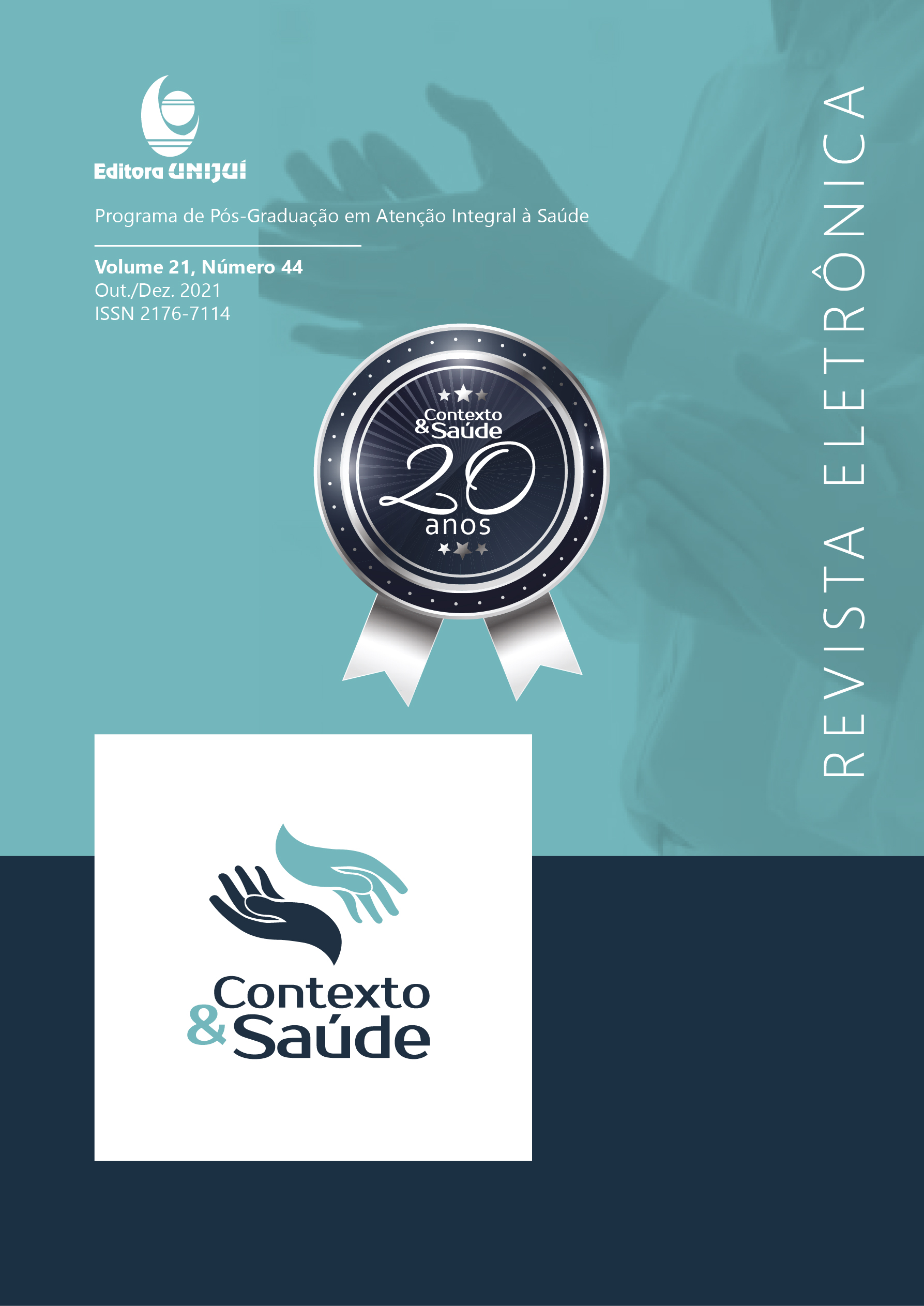ANTROPOMETRIC PROFILE OF OUTSOURCING FOODS FROM SCHOOLS OF A MUNICIPAL MUNICIPALITY
ANTROPOMETRIC PROFILE AND ULTRA-PROCESSED FOOD CONSUMPTION BY SCHOOLCHILDREN FROM A MINEIRO SOUTHERN MUNICIPALITY
DOI:
https://doi.org/10.21527/2176-7114.2021.44.9607Keywords:
Antropometria. Hábitos alimentares. Consumo alimentar. Escolares. Alimentação escolar. Obesidade infantil.Abstract
The objective was to analyze the anthropometric profile and the consumption of ultra-processed foods by children of a public school. A descriptive, cross-sectional and quantitative study was conducted with 141 students from a municipal educational institution in Minas Gerais. A structured questionnaire was developed to evaluate demographic and anthropometric variables, as well as food intake. The variable Body Mass Index by Age was used to assess nutritional status; measures such as waist circumference and waist-to-height ratio were used to assess central obesity among students. Food intake was assessed using a food frequency questionnaire, which was adapted to better assess the consumption of ultra-processed foods. Differences between proportions were estimated using Pearson's χ2 test. In all statistical analyzes, a significance level of 5% was considered. 11.3% (n = 16) of the children were classified as underweight, while 34.0% (n = 48) were overweight. Regarding the presence of central obesity, 7.1% (n = 10) of girls and 9.2% (n = 13) of boys were at increased risk for developing cardiovascular disease. It was found that a significant portion of students with overweight were responsible for the highest consumption of ultra-processed foods. The findings showed a considerable percentage of overweight children and a significant contribution of ultra-processed foods in infant feeding. Thus, it is pertinent to carry out effective food and nutrition education actions aimed at stimulating healthier food consumption and promotion the improvement of nutritional status
Downloads
Published
How to Cite
Issue
Section
License

This work is licensed under a Creative Commons Attribution 4.0 International License.
By publishing in Revista Contexto & Saúde, authors agree to the following terms:
The works are licensed under the Creative Commons Atribuição 4.0 Internacional (CC BY 4.0) license, which allows:
Share — to copy and redistribute the material in any medium or format;
Adapt — to remix, transform, and build upon the material for any purpose, including commercial.
These permissions are irrevocable, provided that the following terms are respected:
Attribution — authors must be properly credited, with a link to the license and indication of any changes made.
No additional restrictions — no legal or technological measures may be applied that restrict the use permitted by the license.
Notes:
The license does not apply to elements in the public domain or covered by legal exceptions.
The license does not grant all rights necessary for specific uses (e.g., image rights, privacy, or moral rights).
The journal is not responsible for opinions expressed in the articles, which are the sole responsibility of the authors. The Editor, with the support of the Editorial Board, reserves the right to suggest or request modifications when necessary.
Only original scientific articles presenting research results of interest that have not been published or simultaneously submitted to another journal with the same objective will be accepted.
Mentions of trademarks or specific products are intended solely for identification purposes, without any promotional association by the authors or the journal.
License Agreement (for articles published from September 2025): Authors retain copyright over their article and grant Revista Contexto & Saúde the right of first publication.

